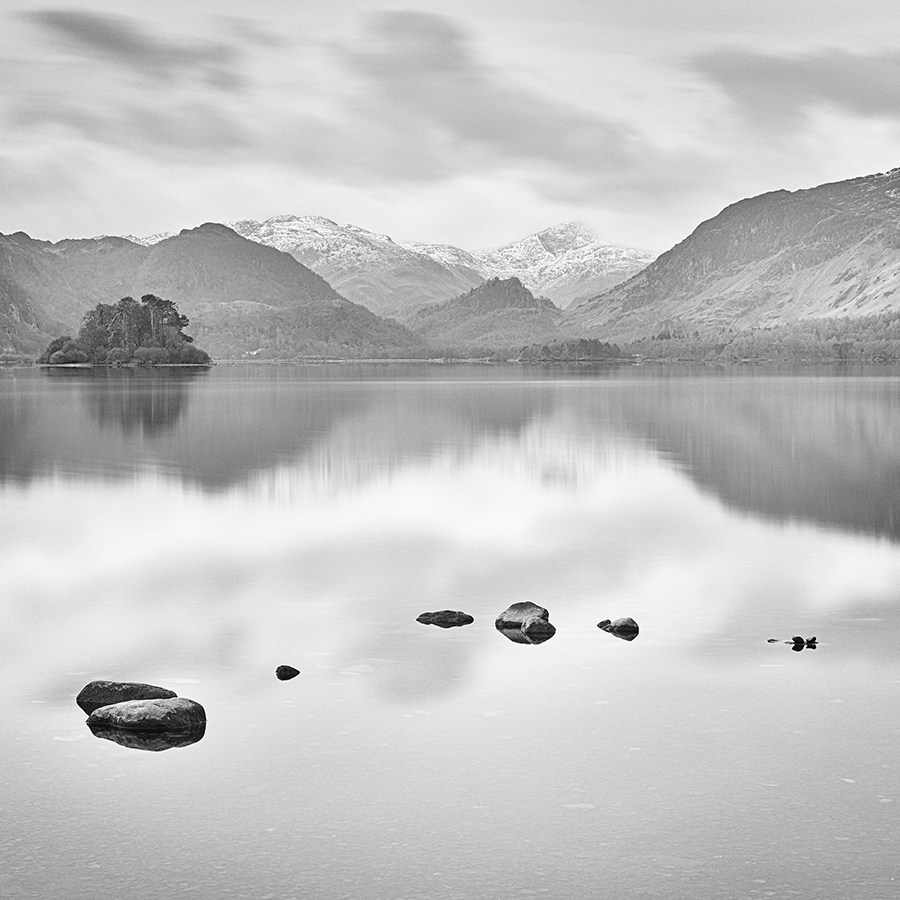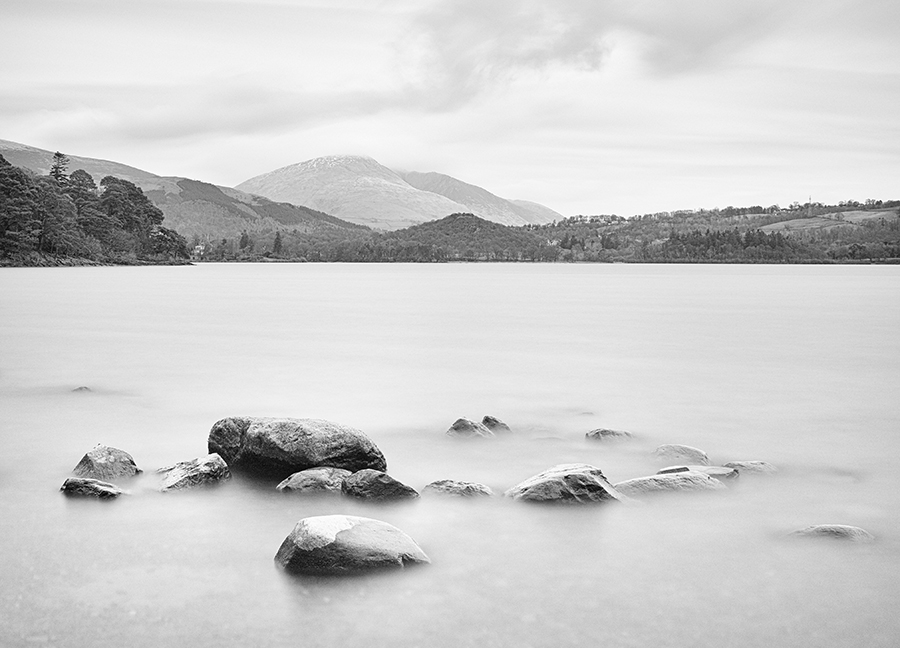My Three Legged Friends
 In this blog post I want to extol the virtues of using a tripod for landscape photography as I am a great advocate of the photographers three legged friend and I'll explain why later.
In this blog post I want to extol the virtues of using a tripod for landscape photography as I am a great advocate of the photographers three legged friend and I'll explain why later.
I'm one of three types of tripod user that I can identify from meeting other photographers who have come on my workshops over the years - I'm in the Tripod Enthusiast camp. I use a tripod for 99% of my work and own at least 5 (they are all good for different jobs - travel, low level macro work, landscape photography in extreme conditions and so on).
The second group are the Reluctant Tripod Users - those who feel they should own and use a tripod (because they've read it in a magazine or been told by another photographer that they should) but don't really want the hassle of carrying or using one. These people buy the cheapest (and as a result usually the flimsiest) tripod they can find and then complain that it doesn't hold the camera steady, the plastic head moves even though it's supposed to be locked in position, it doesn't extend high enough etc (I'm sure you can imagine the whole range of criticisms I've heard). Essentially this becomes a self fulfilling prophecy - buy a rubbish tripod and then don't use it because it's well ..... rubbish. But at least those in this group can appease their consciences - they can say that they own a tripod.
Then there are the Stubborn Refusers - they've never or rarely used a tripod and see no reason to spend good money on a useless accessory. After all. they say, in these days of effective image stabilisation systems and cameras capable of producing wonderful quality images at high ISOs why would anyone encumber themselves with a tripod?
The obvious answer is that a tripod offers stability at any shutter speed. It doesn't matter to me whether my shutter speed (after allowing for depth of field and available light considerations) is 1/15 of a second, 15 seconds or 15 minutes. A tripod makes all of these options possible. It also enables me to deliberately extend the length of an exposure by using ND filters to record windblown clouds or foliage or to smooth the texture of water.
And a tripod allows me to use the lowest ISO possible thereby maximising image quality; not compromising it by setting a higher ISO to enable hand holding of the camera.
Locking the camera onto a really solid tripod (even when a fast shutter speed is possible) has a number of other advantages too. Not least it will ensure that I am getting the best quality image from my camera & lenses by not just minimising the effect of camera shake but by totally eliminatiing it.
Furthermore, consistency of composition is guaranteed. If I am to achieve identical framing of a photograph from shot to shot as the light changes or the cloud structure/pattern alters in a scene then I'll need the ability to place my camera in the same position every time I fire the shutter. Not something I personally find guaranteed when I hand hold the camera. Having the camera in a fixed position is really important to me when I've spent time finalising my composition and I've been stood in the landscape (sometimes for two or three hours) waiting for all the elements to come together.
But I think one of the most important justifications for using a tripod is the fact that it slows me down. It encourages me to look hard at the scene before me, to take my time to find a potential photograph and explore every nuance of the composition before I erect the tripod and move the camera into place. It's the antithesis of snapping off several frames in the hope that one will be OK. Each firing of the shutter is a considered and deliberate act.
 I couldn't take the type of photographs I do without a sturdy and reliable tripod. The images included in this post required the camera to be fixed to a good, solid support. The tripods I own are made by either Gitzo or Manfrotto - I've had most of them for years and they've seen a lot of use. My most used are a System 3 Mountaineer Gitzo (for landscape use in the UK) and a smaller, lighter System 2 Mountaineer for when I'm taking a plane for an overseas trip. Both tripods are used with Arca Swiss geared heads (the Cube on the System 3 and the D4 on the System 2).
I couldn't take the type of photographs I do without a sturdy and reliable tripod. The images included in this post required the camera to be fixed to a good, solid support. The tripods I own are made by either Gitzo or Manfrotto - I've had most of them for years and they've seen a lot of use. My most used are a System 3 Mountaineer Gitzo (for landscape use in the UK) and a smaller, lighter System 2 Mountaineer for when I'm taking a plane for an overseas trip. Both tripods are used with Arca Swiss geared heads (the Cube on the System 3 and the D4 on the System 2).
I've always been a fan of geared heads for landscape work - they offer the precision of control and placement I need to fine tune my compositions. However ball & socket heads might be a better choice if you are more interested in flower & plant photography or macro work for example.
Although I started out with metal tripods, in recent years I've switched to carbon fibre models because they provide the best combination of strength, rigidity and lightweight. As I'm often walking reasonable distances with my tripod weight is an important factor. And this concern becomes more acute when I'm packing my tripod in a case that'll be weighed and checked into the hold of a plane.
That is one of the main reasons I was very pleased to be offered the opportunity to use the latest Gitzo Traveller tripod earlier in the year. Given its name it is no surprise that it has been designed with the traveller in mind! It is based on an ingenious concept that allows the legs to fold down to a very compact size but when extended they do not compromise the maximum height or its load capacity. It's a great tripod and my review can be seen here in two parts - Part One (first impressions) and Part Two (the tripod in use).
That's another three legged friend to add to my collection!

